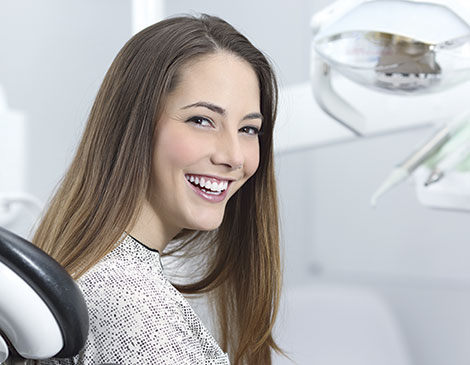As we live in an increasingly digital world, thanks to our smartphones, virtual assistants and more, it should be no surprise that cosmetic dentistry is just as sophisticated.
Digital dentistry, especially when it comes to cosmetic dental procedures, means accuracy, speed, convenience and comfort for patients.
“It permits us to design the smile before we touch the teeth,” says Dr. John Heimke of Facial Aesthetic Designers in Rocky River. “We can test drive it, show the patient a design on their own teeth and then transfer that to making the final porcelain veneers, crowns or implants.”
Wax molds have been replaced with photography and blueprinting — a precise, efficient design process that can ultimately remodel a person’s smile.
Progressive dentists are embracing digital smile design as it gives them the ability to scan a patient’s mouth for impressions, electronically transmit files to laboratories and generate electronic models.
“Digital dentistry is a game changer because accuracy and turnaround time have improved,” says Dr. Mark Iati of Stow Dental Group in Stow.
While digital dentistry can make cosmetic procedure more accessible, it’s also a win for things such as crowns that are necessary to maintain dental health.
“With the digital making of a crown, you can have the crown in the same day,” says Iati. “We can scan the crown and mill it in our office.”
That time-savings can pay off in new-found self-confidence.
In a study by the American Academy of Cosmetic Dentistry, 86 percent of patients said they wanted cosmetic dentistry treatments to improve physical attractiveness and self-esteem.
“When you have an attractive smile, it can help you do better in life,” says Heimke.
Future Smile
Viewing a photograph of what your new smile can look like isn’t nearly as impactful as having a digitally created smile sample.
At dental offices such as Heimke’s, a series of photographs and videos are used to create a “pop-in smile” from a bis-acrylic composite resin in just three minutes while a patient waits. Then Heimke snaps in the sample to show patients what their new smile might look like with porcelain veneers.
His staff even takes video of his patients wearing the smile sample.
“They can see it on a 50-inch screen and view the smile from a distance that other people view them.”
The ability to create the smile sample in the office is reassuring to patients.
“People might wonder, Will the smile turn out like I’m hoping?” he says. “This allows us to show them.”
From there, the sample smile moves to the design process. “I take a digital scan of the teeth, design the smile and send it to my planning center,” says Heimke.
Two days later, he gets the plan back and the teeth are printed on a 3-D printer in his Rocky River office. The whole process — from sample smile to final product — takes about five days. Traditionally, this might have taken up to six weeks.
“With the former analog way, we’d change the design at each step,” says Heimke. “Now, we make the blueprints and follow them accurately to the end.”
Gum Health
Gum recession can be a natural consequence of aging for many people. Yet, because the roots of teeth become more exposed, there’s a greater risk of disease and even tooth loss.
In the past, the surgical solution involved grafting. However, pinhole gum rejuvenation, the latest advancement, has shown to be successful and less invasive.
Like the name suggests, it involves making a pinhole to access gums, then releasing tissue from the bone with specialized instruments and moving it to a desired position that’s attractive and healthy. The relocated gum tissue is held in place with specialized collagen strips until the tissue heals.
“There are some scientific studies underway at the University of New York at Buffalo comparing the pinhole and conventional procedures,” Iati says. “Preliminary results show the pinhole procedure holds up just as well as conventional grafting when properly performed.”
Restoring healthy gums can take years off of a smile and improve dental health.
Similarly, the patient experience for this and other cosmetic dental procedures is more comfortable.
“The greatest advances we are making is how dentistry is delivered to patients,” says Iati.




